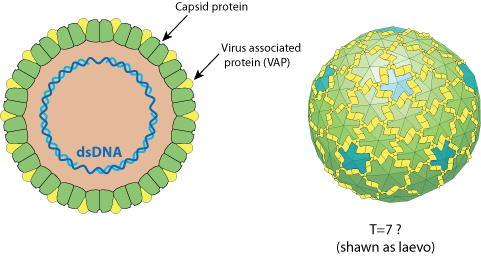VIRION

Virions not enveloped, bacilliform (30 x 60-900 nm) or isometric (45-50 nm in diameter).
GENOME
Monopartite, open circular, double stranded DNA of 7000-8200 base pairs with discontinuities in both strands: one in the transcribed strand and one to three in the non-transcribed strand. Encode for 1 to 8 proteins.
GENE EXPRESSION
The genome encodes a genomic mRNA, which may be alternatively spliced in some genera. The genomic mRNA generally encodes multiple ORFs expressed by ribosomal shunt.
ENZYMES
- Reverse transcriptase
- RNAse H [RT]
- Polyprotein protease (Peptidase A3) [PRO]
REPLICATION
CYTOPLASMIC / NUCLEAR
- Attachment of viral proteins to host receptors mediates entry into the host cell.
- The viral dsDNA is released into the nucleus.
- Transcribed by host RNA polymerase II.
- mRNA translation produces viral proteins.
- Genomic RNA is retrotranscribed into new dsDNA genomes in the cytoplasm.
- Genomes are encapsidated by the capsid protein and form new virions.
- The virion infects either a new cell by plasmodesmata movement, or by insect vector uptake.

